
October 23, 2023
Thought leaders for SLAS share how to launch discussions that address the complicated matters of accessibility, sustainability and data management. Whether the situation requires adapting laboratory design to make it more user-friendly, coping with the daily detritus of research, or organizing the mountain of data produced by a single experiment, life sciences teams can open breakthrough dialogs to advance progress in these areas.

In the life sciences lab, concerns about accessibility, sustainability and data management require evolutionary change, says Brian Iglehart, director, biologics engineering global laboratory automation at AstraZeneca (Gaithersburg, MD, USA). “Take big issues a bit at a time. Any of these topics can overwhelm a busy laboratory manager — or to whomever the responsibility falls,” comments Iglehart, who recently led an SLAS Technology Idea Exchange entitled, “Sustainability in the Lab.”
“Think about how regular recycling evolved. When I was growing up, there was no recycling. You didn't have facilities for it. Now it's a common thing that everyone engages in because the processes have evolved, and progress has made it easier to implement,” he says. “All aspects of laboratory work life are on that same track. It will eventually get there. It just needs time.”
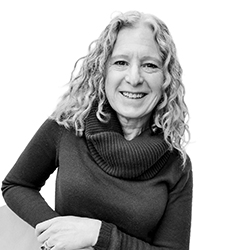
Other thought leaders on these topics support this approach. During her 30-plus year career as a laboratory architect, Marilee Lloyd, AIA, notes that thoughts on accessibility evolved thanks to the passing and introduction of the Americans with Disabilities Act (ADA) in 1990.
“Thirty years ago, discussions that once began as grudging ways to accommodate change have evolved to broader, deeper, more authentic conversations about how to make environments more comfortable for everyone,” observes Lloyd, associate principal and national laboratory planning leader at HED, (Royal Oak, MI, USA), one of the largest and oldest national architectural and engineering design firms in the US. “As time has gone on, the way we make these accommodations and the way we think about this for a variety of needs has improved.”
A similar path to progress awaits data management, a topic with a relatively ramped up trajectory in the life sciences landscape due to the explosion in information generated by increasingly more complex technology.
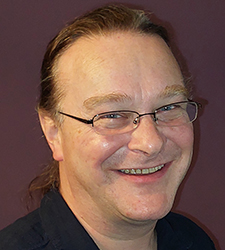
“A greater quantity and variety of complex data that is dimensions larger is coming to us faster than ever before. We must find a way to categorize and harness the information,” comments Stephen Brough, medicine design data strategy and design manager at GSK, (Stevenage, UK). He adds that it is not advisable for one person to handle the responsibility of these actions.
“I'm in the drug discovery business. Every single team I have ever been on that was successful has been multi-disciplinary,” Brough continues. “You must get all the stakeholders involved and persuade them that every single one of them has to bring their specific skill set to the problem.”
Brough recommends that companies that are building groups to address complicated issues take a page from the play books of multi-disciplinary life sciences super-groups such as The Broad Institute’s cell painting research team.
“When you hear what they were doing and the kind of team that they developed, the light goes on and you can see why this dynamic works so well. When you bring together a group of different people with different skill sets you get magic and remarkable developments,” Brough comments.
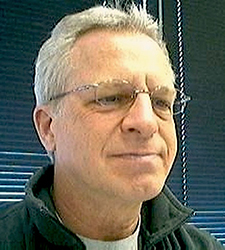
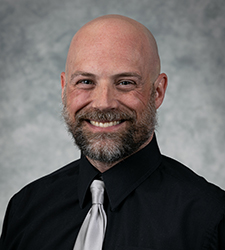
With the right team in place, rolling out a step-by-step guide through change is also helpful. “Progress in any complex area of change requires us to tell people how they can take action,” says David Hicks, chief operating officer, head of quality at KEMP Proteins (Frederick, MD, USA), a gene-to-protein bio-services organization. “When it comes to complex matters – such as sustainability, for example – education is more than ‘the environment will do better if we don't put as many plastics into it, or if we don't put as much waste into the sea.’”
Action begins with altering daily habits, says Steve Vitale, a sustainability innovation lead for GSK (Collegeville, PA, USA). “A good first step in any new program ushering in change is to identify and tackle the problems unique to the laboratory environment,” he comments. As an example in sustainability, Vitale describes after-hours energy use as the low-hanging fruit. “It's in every laboratory culture – equipment's usually left on 24 hours a day, seven days a week.”
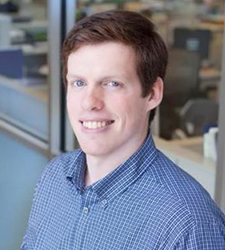
For Paul Jensen, Ph.D., assistant professor of biomedical engineering at the University of Michigan, Ann Arbor, (Ann Arbor, MI, USA), a key component in launching successful change programs in these areas is finding strength for one initiative within another. He believes data management offers this support.
“Science is very expensive, and there's a huge footprint to it,” says Jensen, who serves as co-chair of the SLAS Data Science and AI special interest group (SIG). “In regard to sustainability, a lot of experiments are repeated simply because we don't have proper data management. In terms of accessibility, many people want to do science but for whatever reason they can't work in a lab, or they don't live where they can be on site doing science. There are wonderful opportunities for being a scientist who works with data and makes discoveries — provided there's a data management system that connects people and laboratories.”
Accessibility: Opening the Lab to Everyone
A series of recent SLAS New Matter Podcast episodes focused on accessibility and revealed how laboratory accessibility is changing. Some guests noted that accommodations — including working off-site, taking longer break times and flexing the daily work schedule — don’t even require changing the physical environment to open up the lab to more diverse researchers.

Guest Logan Gin, Ph.D., discussed how one university program, designed to be more inclusionary of neuro-diverse students, created an opportunity for a student with autism to work on autism research. “He's the only individual on that research team who has autism and is able to share their personal experience,” says Gin, who is assistant director of STEM Education at the Sheridan Center for Teaching and Learning at Brown University (Providence, RI), where he works on initiatives related to STEM graduate student and postdoc teaching professional development.
“This student brings a different and personal perspective to their research team, which is incredibly valuable in those spaces that were, prior to that, conducted by primarily and almost exclusively by researchers without disabilities,” continues Gin, who holds a Ph.D. in biology from Arizona State University (Tempe, AZ, USA). His dissertation work centered around the experiences of STEM students with disabilities, motivated by his own undergraduate experiences in the lab and completing coursework as someone with diastrophic dysplasia dwarfism.
“As an undergraduate student, I had difficulties navigating lab spaces and classroom spaces, which got me thinking about what this looks like on a broader scheme for other individuals with disabilities," Gin described in the SLAS podcast. Using forearm crutches and a scooter to get about his day made lab work challenging, and it caused him consider: “How can we create accessible spaces for everyone, regardless of disability?"
For Lloyd, this means determining what the lab needs now and what will allow the space some adaptability for the future. Discussions should consider every possible area of access from typical lab-life tasks that include bench heights, making handwash stations more accommodating, and where personnel dress in PPE, to other, less-lab centered activities such as providing adequate space for someone who is nursing, needs an area for a quiet moment or for religious reflection during the day.
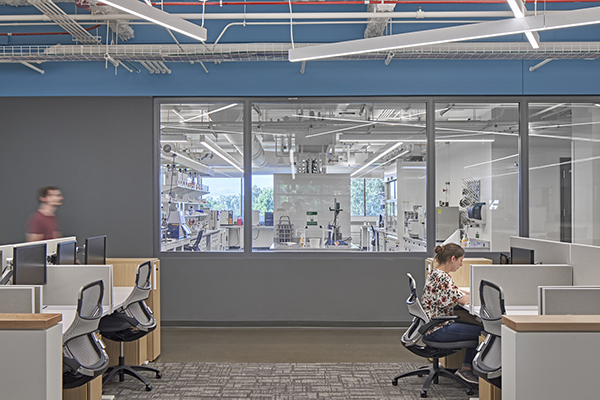
“And how do we be mindful and respectful of all of these accommodations so no one feels called out?” she continues, adding that careful conversations held over the course of design development help individual labs find the right solutions whether those organizations are planning construction of new buildings, renovation on existing buildings, or are simply adjusting their lab layout for new equipment. Lloyd describes the level of discussion as the pivotal change in accessibility.
“There's more thought about wellness and overcoming language and cultural barriers in laboratory design,” comments Lloyd, who also was an SLAS New Matter Podcast guest. “As a team, we want to make this environment more welcoming to people across a broader spectrum and that’s about more than just physical disabilities.”
Sustainability: Building from Daily Habits
The issue of sustainability in the lab is much like accessibility and the best place to begin is by analyzing everyday actions. “Teaching people what can be done and getting people to start thinking a little differently is a major component,” says Iglehart, adding that a healthy regard for practicality is helpful.
“There’s always a bit of skepticism about the latest and greatest technology to ‘fix’ aspects of work life. We have to be careful to implement actions that don’t have a negative impact on science or business,” Iglehart continues.
Hicks agrees, adding that the cost of sustainability frequently slows the process of adopting environmentally friendly practices. “Anybody who works in regulatory or quality environments must determine how to move into sustainability without affecting quality or their FDA license,” he comments.
“For many smaller companies — particularly those producing licensed products — adopting a sustainable practice comes down to whether or not it actually makes a profit, doesn't affect the bottom line or gives the company good marketing exposure. Otherwise, they’re unlikely to act,” Hicks continues, suggesting that companies first adopt activities that save money. Among these practices are simple actions such as checking that lights and faucets are off, adjusting bio-cabinets and freezers to more economical settings, raising or lowering the temperatures on central air-conditioning and heating systems, and fine-tuning end-of-experiment cleanup by employing reusable glass products or one-use plastics from manufacturers with a recycling program.
“This is another area where educational support will be helpful,” says Hicks. “A step-by-step guide for actions such as validating a wash cycle, for example, will enable researchers to limit one-off, disposable products and move back into a glass environment where you can now wash everything.”
Vitale views segregation of recyclable materials and contamination within the waste streams as the biggest problems facing life sciences labs. He strongly encourages labs to recycle above and beyond what their larger institution might engage in by learning what local regulations are and understanding vendor-partner capabilities, such as taking back single-use items into their manufacturing process.
“Companies such as AstraZeneca and GSK are committed to seeking out other sustainable companies to implement and work collaboratively to advance our programs,” says Vitale, who frequently works with Iglehart on sustainability issues, despite being from rival pharmaceutical companies. The pair met through the nonprofit My Green Lab initiative — an organization dedicated to improving the sustainability of scientific research.
Vitale’s current push at GSK is to formulate a process for washing and reusing pipette tips to reduce plastic waste and consumable purchasing. One current effort is partnering with Polycarbin, a company that offers a comprehensive range of low-carbon products, recycling services and environmental impact measurement tools.
“They create conical tubes and pipette tips, a portion of which are made with recycled plastic resin,” says Vitale. “It's a fully circular economy model and something that many companies drive toward with sustainable efforts.”
Iglehart adds that larger companies have a responsibility to lead the push toward sustainable manufacturing practices. “Larger pharmaceutical companies have the buying power to coerce manufacturers to take more heed of sustainable practices and specifications,” he comments. “Everyone has a challenge to meet regardless of the size of their company.”
Data Management: Scaling the Mountain of Accumulating Information
The biggest challenge in the area of data management is the growing amount of data to process, according to Brough, who mentions that scientists didn't envision this scale of information resulting from the average experiment when data analysis platforms were originally set up by vendors or internal corporate systems.
“It’s not ever-so-slightly more data-rich than previous generations of experimentation, it’s orders of magnitude more complex than previous iterations, and many life sciences labs try to push this plethora of additional data into legacy systems that weren’t built for it,” he continues.
“I've been in data science platform organizations and I've felt the pain that those folks feel,” says Brough, who uses his role at GSK to define business cases and translate them into technical requirements for data pipelines and analytics solutions for a medicine design team. “We need to align IT with bench scientists and make it easier to capture, share and contextualize data and then make it available to others in our community.”
Jensen agrees, adding that biologists must become willing to learn more about data science to accomplish this. “When developing a data management plan for your organization, your focus should be on convincing front-line scientists how data management will be valuable for them,” he says. “The process of capturing information is easier if professionals with fundamental biology knowledge, who produce the data, also create the metadata required to mine this information later on.”
He doesn’t overlook the importance of data scientists to the equation. “For the best possible outcomes, data scientists need to see exactly how bench scientists’ work is and how difficult it is to provide all the context that's needed for the data. It’s easier to accomplish this if data scientists become part of the lab’s work group,” Jensen notes. “From that vantage point, data scientists can see how data are generated and how they can help with it.”
Brough supports this approach and mentions the addition of deep technical experts — those who build computer systems and databases — to the collaboration. “You need these people, who have an appreciation of the domain from which the data is coming, to bring some value judgments to what we keep,” he says.
Finding a Common Thread
Jensen suggests that SLAS is a key factor to building solutions groups and a rallying point for tough areas of change in the life sciences lab. “No one company is going to solve these issues. SLAS already has such a broad community of automation engineers, AI professionals and scientists – it's one place where we can all get together and talk about data management,” he notes. As co-chair of the SLAS AI and Data Management SIG, he sees the results of multi-disciplinary conversations.
“We had some diversity in the group that met for the first SIG meeting, and people enjoyed hearing all the different perspectives and common struggles,” he says.
“The SIG discussions led us to talk about how to cross train people. For data management, it’s an inherently good thing to have biologists who are interested in data science and vice versa. Let’s hope the spirit of multi-disciplinary collaboration spreads into all the challenging topics in the life sciences,” Jensen concludes.
Sidelines
Need a Group Experience? Explore the SLAS Special Interest Groups and Get Involved!
Featured Topics and Information from ADA.gov
Examine the European Union Polices for People with Disabilities
